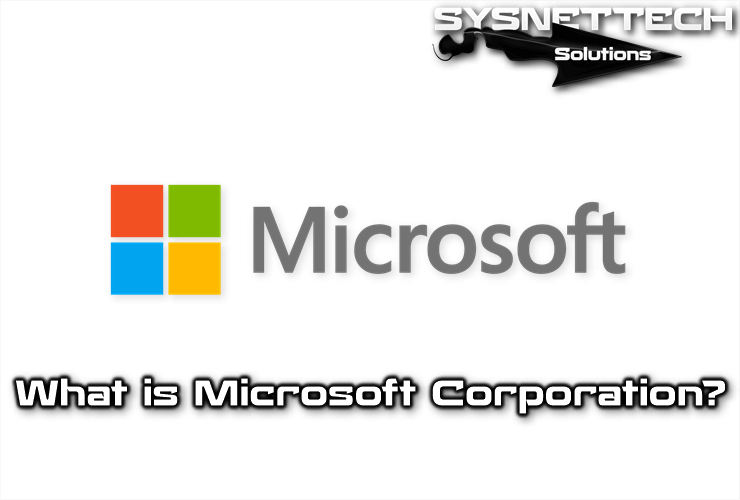WWW (World Wide Web) is a term used in computer science. It is a system of hypertext or hypermedia documents that can be connected and accessed over the Internet.

What is WWW in a URL?
A collection of files called Web sites or Web pages that contain information in text, graphics, audio, and video formats, and links to other files. The files are identified by a universal resource finder (URL), which specifies the transfer protocol, the Internet address, and the filename of the machine.
Computer programs called browsers such as Google Chrome or Microsoft‘s Internet Explorer use the HTTP protocol to receive these files. In addition, new file types are constantly being developed, such as animation or virtual reality (VRML).
Until recently, readers had to be specially programmed to handle every new file type. Programming languages such as Java from Sun Microsystems allow browsers to install utilities that can process this new kind of information.
Using a web browser, the user displays websites that consist of web pages that can contain text, images, videos, or other multimedia content, and navigates using hyperlinks.
The web was founded in 1989 by British Tim Berners-Lee and Belgian Robert Cailliau while working at the European Organization for Nuclear Research (CERN) in Geneva, Switzerland, and was published in 1992.
Since then, Berners-Lee has played an active role in guiding the development of Web standards, such as the markup languages in which web pages are created, and has advocated a semantic Web vision in recent years.
Definitions
Web Page
A document or information source that is usually in HTML format and can contain hyperlinks to other web pages. The web page can be accessed from a physical device, an intranet, or the Internet.
Website
It is a set of web pages that are common to a domain or subdomain on the World Wide Web.
Web Server
Hyperlinks is a service or program that implements the HTTP protocol to transfer what we call web pages or HTML pages. This name is also given to the computer running this program.
Web 2.0
It represents the evolution of traditional applications towards end-user oriented web applications. Web 2.0 is not exactly technology, it is an attitude.
Web 3.0
The term Web 3.0 first appeared in an article by Jeffrey Zeldman in 2006 associated with Web 2.0 critic and technologies like AJAX. There is currently a considerable debate about what Web 3.0 means and what the correct definition is.
Basic Standards
- HTTP (HyperText Transfer Protocol)
- HTML (Hypertext Markup Language)
- URL (Uniform Resource Locator)
Properties
- Client-Server Model
- Multiple protocol support
- One piece of software to access all information
- Uniform URL naming scheme
- Hypertext and Hyper Environment
- HTML as a universal language
- Extensibility
Historical
In 1989, Tim Berners-Lee and his team created the World Wide Web at CERN Laboratories. Its first goal was to provide a unified method of accessing hypermedia documents from anywhere on the internet. With the appearance of the first graphic display, its use has expanded.
Fewer segments of society have not been affected in one way or another by the explosive growth of the online world.
While the numbers have changed, some studies estimate that nearly 1.7 billion people or almost 25% of the world’s population are online users.
Twenty years ago, the British Tim Berners-Lee invented the web “just because it needed it”. From that moment on, the world has never been as before.
“These twenty years are nothing,” said Carlos Gardel in his tango Volver. And perhaps in a few parts of world history, it is an appropriate statement, as in the dizzying development of the global internet network over the past two decades.
Waxing was similar to what happened with the automotive industry at the beginning of the 20th century. An invention that existed decades ago reached its potential only when someone understands how to lock it.
In the automotive case, Henry Ford succeeded in designing the T model that millions of consumers could buy simple mechanical curiosities of millions by then.
Similarly, Berners Lee’s invention of the World Wide Web has made the Internet suddenly hundreds of millions of people created by scientists from the US Department of Defense decades ago, which excited scientists and experts from a small community.
The World Wide Web tool has managed to provide the online world, which was previously only accessible with complex computer codes, only a ‘click’ away.
Giants of the Network
And with the industrial age, the business giants brought their surnames such as Rockefeller, Vanderbilt, Carnegie or Ford to a new generation of mega-companies.
Perhaps few companies better reflect the striking economic and cultural expansion of the network like Google.
Founded in 1996 by two Ph.D. students from Stanford University in the United States, based on the advice of one of its academic advisors, the company quickly took control of the internet search engines market, the rules that users are almost trying to explore.
The academic project of students (Sergey Brin and Larry Page) reached a market value of $ 320 billion in 2020 and continues to grow.
With its ability to focus on pages that are normally common among network users, Google is today seen as a titan in the advertising, media, commerce, and even cultural industries.
There is a reason why language academies around the world accept the inclusion of the google verb in their own language.
Like the Industrial Revolution, this network revolution has advocates and critics. On the one hand, the economic expansion of the online world has victimized many in the real world. The expansion of Amazon has made thousands of booksellers unable to do business. All industries, such as the recording and newspaper industries, are very upset about the progress of the network.
The expansion of Wikipedia led by Jimmy Wales has drastically reduced the appeal of traditional encyclopedias.
There are also good and bad results in the cultural and political sphere. Twitter founders Evan Williams and Biz Stone saw how his invention helped protest movements in closed societies.
However, having voiced many people implies that some of the ideas that some consider unwanted and even dangerous have reached much more and also allow interaction.
Social Networks
Meanwhile, online social media has the potential to connect individuals, regardless of race, class, or place of origin, sharing values, hobbies, and interests.
However, many complain that these networks, whose most important base are perhaps Facebook, neglect social interaction, and sometimes threatens to challenge the privacy of millions of users.
The web provides more information sources such as a printing press to reach more people.
Today’s global network is like a city with some dangerous places and other amazing places.
Related Articles
♦ GPU
♦ CPU
♦ Intel’s History
♦ AMD’s History
♦ Ubuntu History



